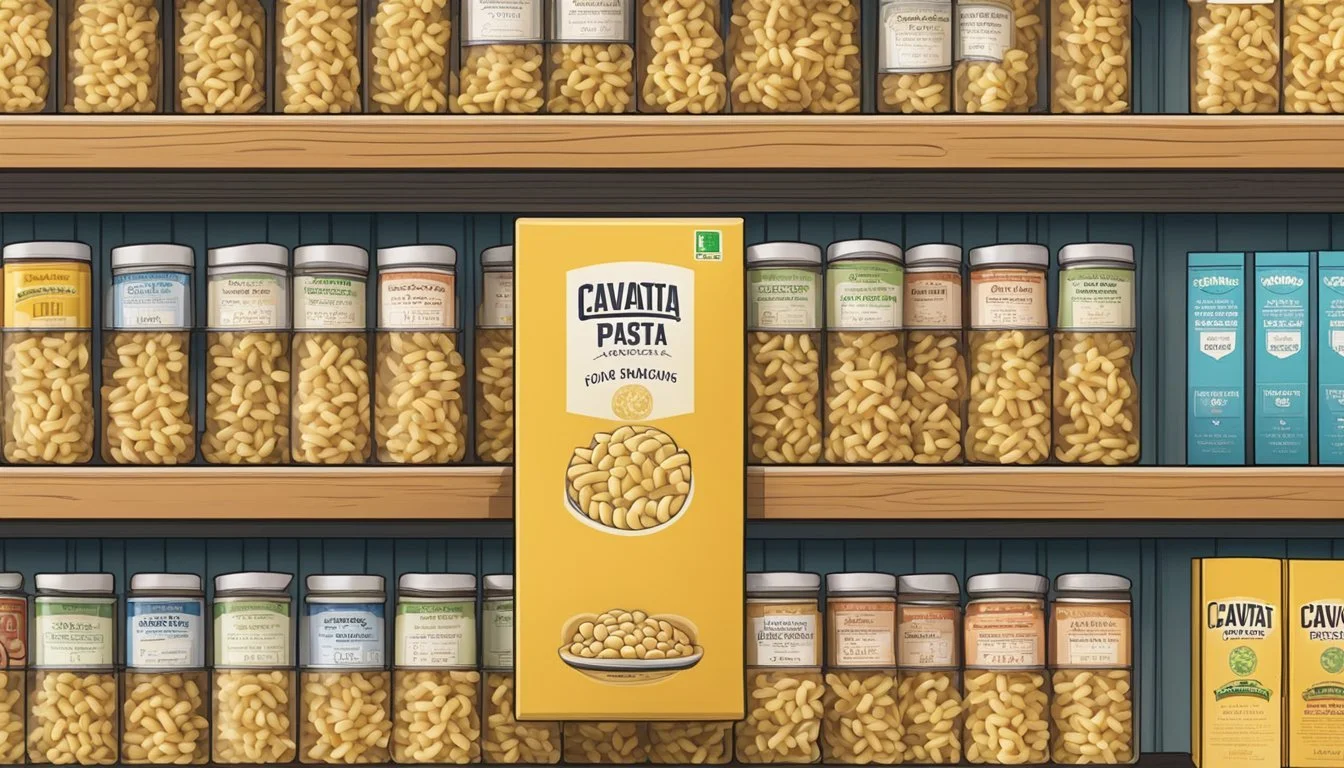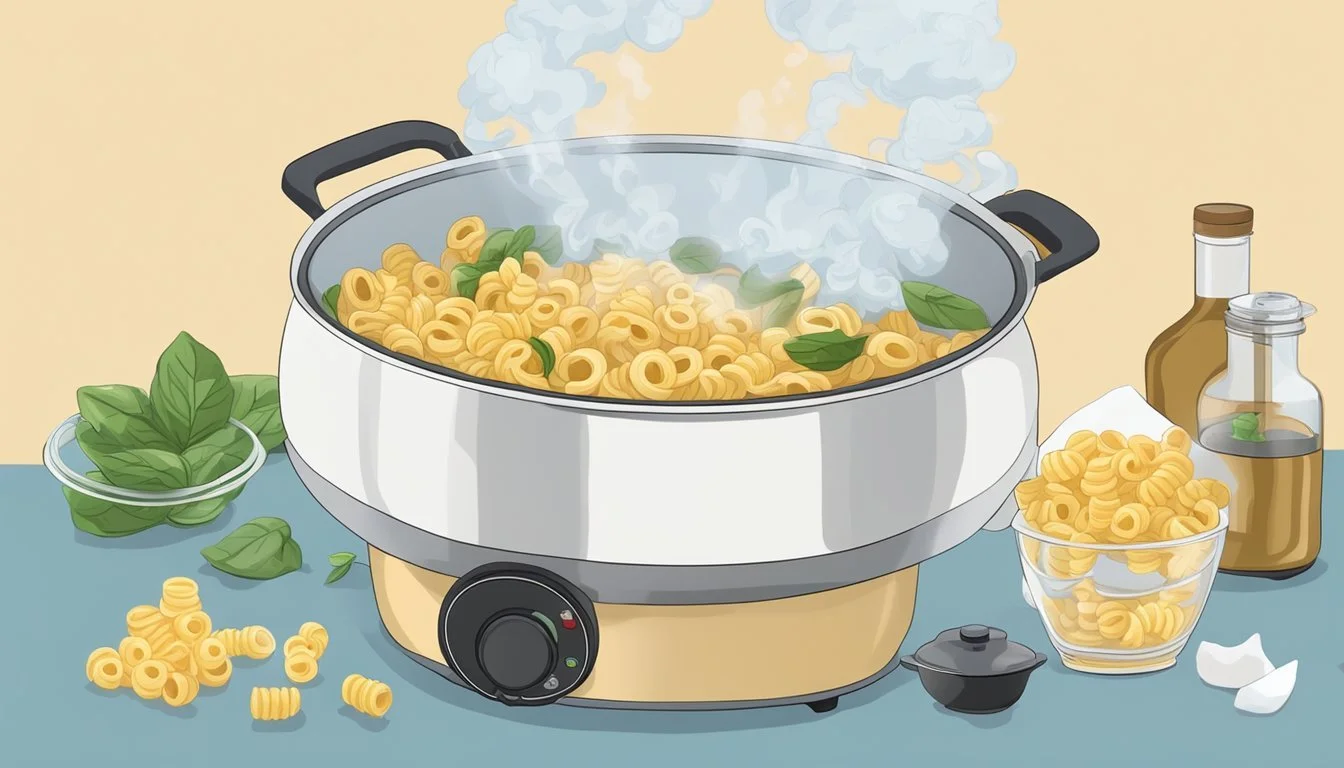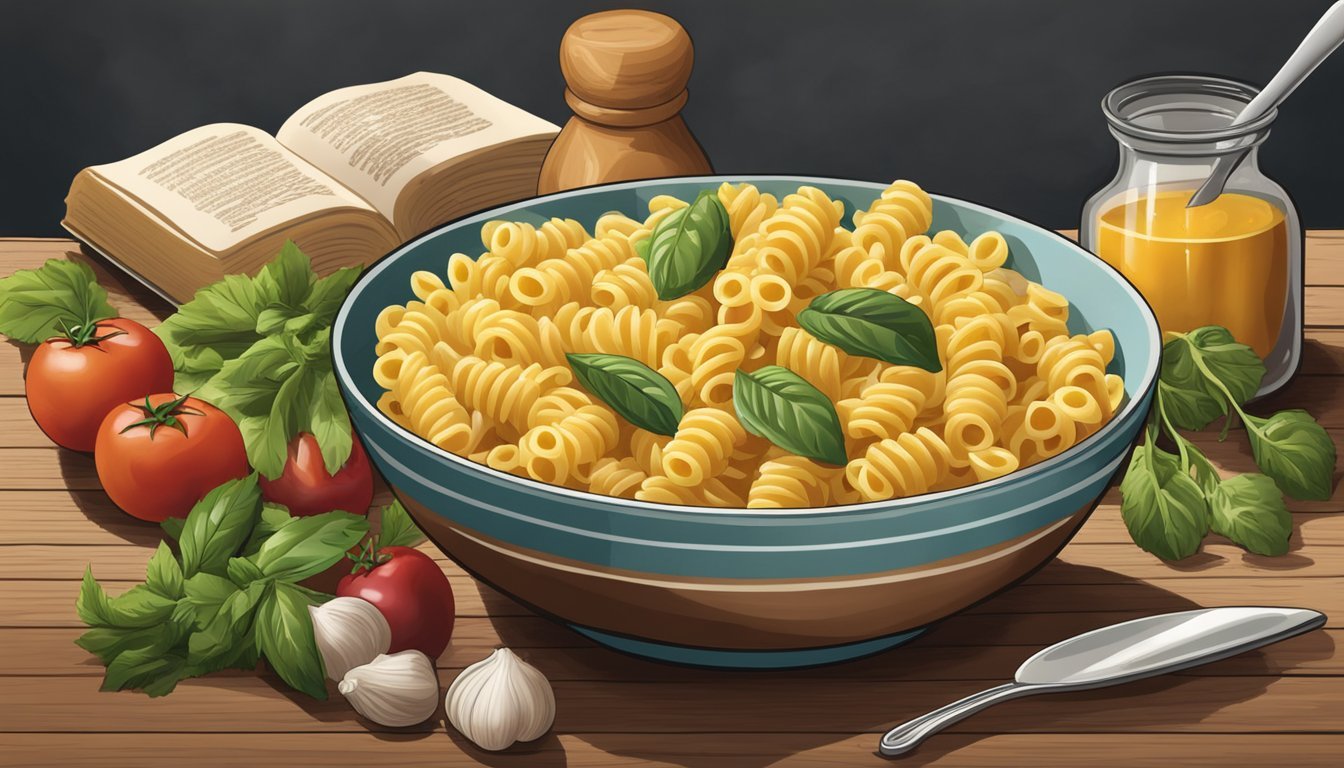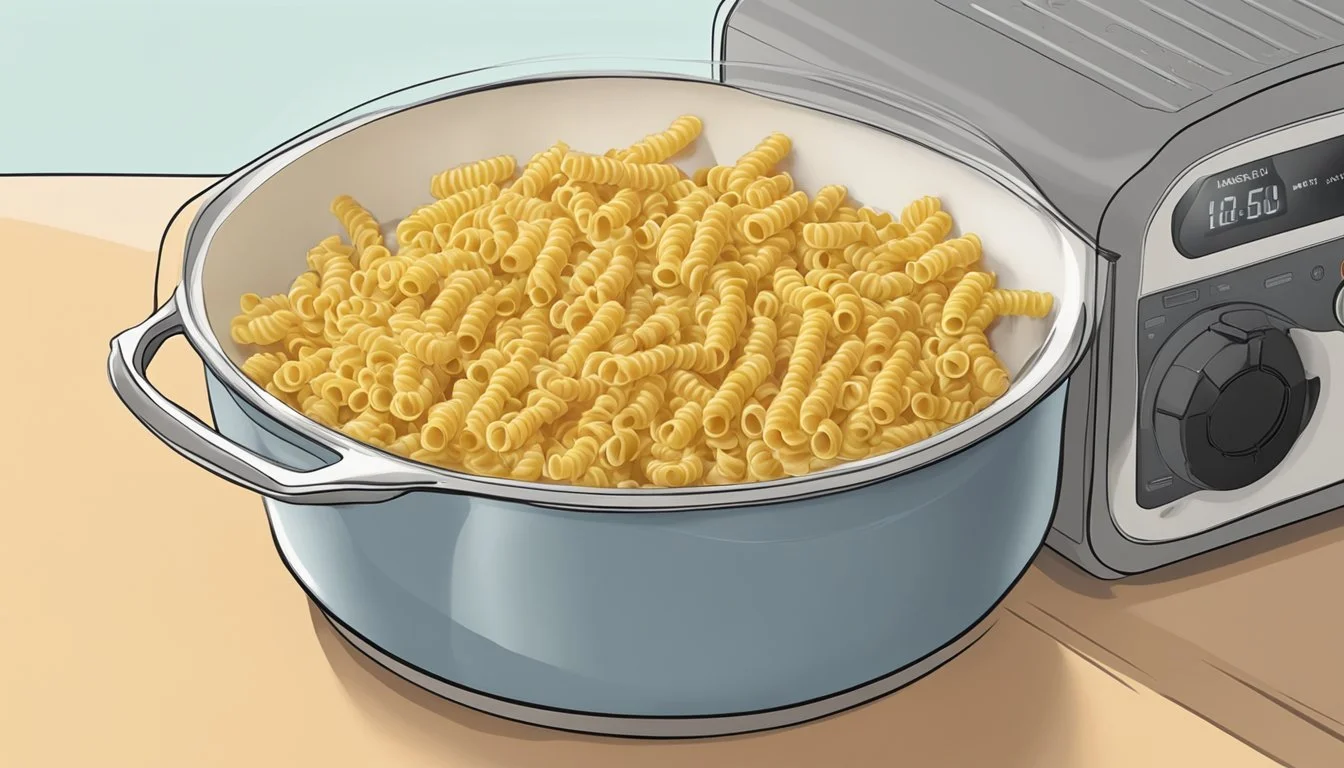How Long Does Cavatappi Pasta Last?
Shelf Life and Storage Tips
Cavatappi pasta, known for its corkscrew shape, is a popular choice for a variety of dishes ranging from salads and casseroles to baked pasta (What wine goes well with pasta?) creations. Like all pasta, the shelf life of cavatappi depends on its state—dry, fresh, or cooked. Dry cavatappi has a lengthy shelf life due to its low moisture content, making it less prone to spoilage. When stored properly in a cool, dry place, unopened dry cavatappi can last for one to two years.
Once the package is opened, it's best to use the pasta within a year. Ensuring that the pasta is sealed well after opening and kept away from changes in temperature and humidity can help maintain its quality. Fresh cavatappi, on the other hand, contains more moisture and therefore has a much shorter shelf life. Typically, it can be refrigerated for a few days.
Cooked cavatappi has the shortest shelf life due to the added moisture and potential for bacterial growth. It should be refrigerated within two hours of cooking and is best consumed within three to five days for optimal safety and taste. All leftovers should be stored in airtight containers to retain quality and prevent the absorption of odors from the refrigerator.
Storing Cavatappi Pasta
Proper storage of cavatappi pasta is essential for maintaining its quality and longevity. Whether it's dry or cooked, the right conditions can significantly extend its shelf life.
Dry Pasta Storage
Dry cavatappi pasta should be kept in a cool, dry place away from moisture and heat. It's best stored in an airtight container to prevent exposure to air which can degrade the pasta over time. Under these conditions, dry pasta can last up to two years.
Location: Pantry or cupboard away from heat sources
Container: Airtight to prevent moisture and insects
Cooked Pasta Storage
Once cooked, cavatappi pasta should be stored in the refrigerator if not consumed immediately. To maintain its texture and prevent it from drying out, one may store it in airtight containers or resealable plastic bags.
Temperature: Refrigerate within two hours of cooking
Shelf Life: Up to 5 days
Refrigerating Cavatappi
When refrigerating cavatappi pasta, make sure it is in a shallow, airtight container or tightly covered with plastic wrap. This prevents the growth of bacteria and retains the pasta's moisture.
Method: Airtight containers/plastic wrap
Shelf Life: 3-5 days
Freezing Cavatappi
For longer-term storage, one can freeze cavatappi pasta. It should be slightly undercooked if you plan to freeze it, as it will continue to cook when reheated. Use airtight containers or freezer bags to store the pasta, and it can last for up to three months.
Preparation: Undercook by 1-2 minutes
Method: Airtight container or freezer bags
Shelf Life: Up to 3 months
Shelf Life of Cavatappi Pasta
The duration that cavatappi pasta retains its quality depends on its state: as dry pasta or cooked pasta. Storage conditions are crucial in determining how long it stays suitable for consumption.
Dry Pasta Shelf Life
Dry cavatappi pasta, when stored properly in a cool, dry place, has a considerable shelf life. Its expected longevity is:
Unopened: 1-2 years beyond the printed "best by" date.
Opened: Remains good for the same duration, provided it is stored correctly, typically in an airtight container to prevent moisture and pests.
Dry pasta is considered quite shelf-stable due to the absence of moisture, which prevents spoilage. When cooked to al dente, dry pasta's firmness should be consistent, but storage time does not affect this quality.
Cooked Pasta Shelf Life
Once cavatappi pasta is cooked, its shelf life is significantly reduced due to the presence of moisture.
Refrigerated: Leftover, cooked cavatappi pasta should be consumed within 4-5 days for the best quality.
Frozen: If frozen, it can last for 2-3 months. Freezing may alter its texture slightly, but it remains safe to eat.
Cooked pasta should be stored in shallow airtight containers or resealable bags. Rapid cooling and prompt refrigeration of leftovers minimize the risk of bacterial growth.
Cooking Perfect Cavatappi
Cooking cavatappi pasta requires attention to timing and technique to achieve that desirable al dente texture. It's important to use salted boiling water and to understand the two-step cooking process if the recipe calls for baking.
Recommended Cook Time
For cavatappi pasta, the recommended cook time varies between 6 to 8 minutes. This range should yield an al dente texture, which is firm to the bite. It is crucial to taste the pasta about a minute before the lower end of this range to prevent overcooking.
Salted Boiling Water
Always start with a large pot of salted boiling water. Adding salt enhances the pasta's flavor while boiling; the exact amount may vary, but a good rule of thumb is about 1 tablespoon of salt for every 4 quarts of water.
Two-Step Cooking Process
Some cavatappi dishes, especially baked recipes, employ a two-step cooking process. Initially, cook the cavatappi in boiling water for 2 minutes less than the package’s recommended time. The pasta will continue to cook and absorb flavors during the baking phase.
Al Dente Cooking
Achieving al dente pasta is a balance of cooking time and texture assessment. Start checking the pasta for a firm center and tender exterior a minute ahead of time. Drain it while there's still a hint of firmness, as it'll continue to soften slightly from residual heat.
Cavatappi Pairings and Sauces
Cavatappi pasta, with its corkscrew shape, is an excellent carrier for various sauces. This pasta complements a range of flavors, from rich and creamy to tangy and herbaceous.
Cheese Sauce Pairings
Cavatappi pairs exceptionally well with cheese sauces. A classic combination involves a three-cheese sauce, often comprising cheddar, mozzarella, and parmesan, which nestles into the pasta’s spirals. For those who prefer a single cheese flavor, a sharp cheddar or smoky Gouda cheese sauce enriches the cavatappi's texture.
Recommended Cheese Pairings:
Cheddar
Mozzarella
Parmesan
Gouda
Tomato Sauce Pairings
When it comes to tomato sauce pairings, cavatappi supports both simple and robust flavors. A basic marinara sauce capitalizes on the pasta's design, while a heartier tomato sauce boasting herbs and vegetables like spinach and sundried tomatoes offers more complexity.
Recommended Tomato Sauce Pairings:
Basic Marinara with Basil
Herb-Infused Tomato Sauce
Tomato Sauce with Spinach and Sundried Tomatoes
Cream Sauce Pairings
Cream sauces are a divine match for cavatappi. The basic béchamel sauce, or a variation with added garlic for depth, clings to the pasta, enhancing every bite. Options to add flavor include incorporating lemon zest (how long does lemon zest last?) or cracked pepper for brightness and heat.
Recommended Cream Sauce Pairings:
Classic Béchamel
Garlic Cream Sauce
Lemon Pepper Cream Sauce
Vegan Sauce Pairings
Vegan pairings are not to be overlooked. Cavatappi can be tossed in a vegan cream sauce made from cashews or other plant-based ingredients. Vegan parmesan cheese can be sprinkled on top for an added touch of savoriness.
Recommended Vegan Pairings:
Cashew Cream Sauce
Vegan Alfredo Sauce
Vegan Parmesan Topping
By considering these sauces and pairings, chefs can create a dish that showcases cavatappi's unique texture and versatility while catering to a variety of taste preferences.
Cavatappi in Recipes
Cavatappi pasta, with its corkscrew shape, excels in various dishes ranging from hearty casseroles to refreshing salads. Here's how to incorporate cavatappi into several culinary creations.
Cavatappi Casseroles
Cavatappi makes an excellent base for casseroles due to its ability to hold sauces and other ingredients within its spirals. A creamy baked version with a blend of cheeses, such as Parmesan for a sharp edge, can provide a comforting meal. One can layer this pasta with rich tomato sauce and cheese before baking to achieve a bubbling, golden crust.
Mac and Cheese Variants
Transforming mac and cheese into a gourmet experience is easy with cavatappi. Its shape is perfect for capturing thick, cheesy sauce in every bite. Creative cooks might include a mix of cheeses—sharp cheddar, gouda, or even a touch of blue cheese for an added depth of flavor.
Salads with Cavatappi
For a lighter option, cavatappi lends itself well to salads. Its sturdy structure can stand up to tangy dressings and a medley of vegetables. For a colorful and nutritious dish, one could toss cavatappi with cherry tomatoes, cucumbers, feta cheese, and a lemon-herb vinaigrette.
Gluten-Free and Dairy-Free Options
Those with dietary restrictions need not miss out on dishes featuring cavatappi. Many brands offer gluten-free cavatappi made from rice, corn, or quinoa flour (how long does quinoa flour last?). Dairy-free mac and cheese variants can be created using nutritional yeast or cashew cheese to mimic the creaminess without actual dairy.
Reheating and Leftovers
Careful reheating of cavatappi pasta leftovers is essential for maintaining their texture and taste. There are several methods, such as oven, microwave, and stovetop, each offering different benefits for reheating.
Oven Reheating Technique
To reheat cavatappi pasta in the oven, one should preheat the oven to 350 degrees Fahrenheit. The pasta, especially if it's mixed with sauce, should be placed in an oven-safe dish, covered with aluminum foil to prevent it from drying out. It typically needs to heat for 10 to 20 minutes, depending on the amount.
Microwave Reheating Tips
Reheating cavatappi pasta in the microwave should start with placing the pasta in a microwave-safe dish. It's advisable to add a small amount of water or sauce before loosely covering the dish. The user should heat the pasta on high for 1 to 1 ½ minutes, then stir, checking if additional 15-second increments are necessary for even warmth.
Stovetop Reheating Method
When one opts to use the stovetop, the pasta can be reheated in a skillet over medium heat. For the best results, they should add a little bit of oil or butter to the skillet to prevent sticking and to refresh the flavors. Leftovers should be stirred constantly for even reheating, which usually takes just a few minutes.
Nutritional Information
Cavatappi pasta, a corkscrew-shaped variety, offers basic nutritional benefits that come from its macronutrient content, including a notable amount of calories and protein for energy and muscle maintenance, alongside various nutrients.
Cavatappi Calories and Protein
Calories: A typical serving size of cavatappi pasta, which is approximately 1 cup or 120 grams, contains about 190 to 240 calories. The calorie content can be a significant source of energy for individuals, depending on their overall dietary needs.
Protein: This pasta provides a modest protein content. In a single serving, expect to find around 7 grams of protein, contributing to muscle repair and overall body function.
Cavatappi Nutrients
Cavatappi pasta boasts a selection of nutrients that are essential for good health:
Total Fat: A serving contains approximately 0.5 to 1.1 grams of fat, which includes a mix of polyunsaturated and monounsaturated fats, but typically low levels of saturated fat.
Carbohydrates: There are about 37 grams of carbohydrates per serving, which fuel the body with energy.
Dietary Fiber: With about 2.2 grams of fiber per serving, it can contribute to digestive health.
Minerals: Although not a high source, cavatappi provides small amounts of various minerals. Sodium content is quite low, usually around 1.2 milligrams per serving.
Substitute Pasta Types
When cavatappi pasta is unavailable, various alternatives can provide a similar culinary experience, particularly in recipes where the pasta's ability to hold sauce is desired.
Substitutes for Cavatappi
Cavatappi pasta is known for its spiral, corkscrew shape, which is excellent for holding onto sauces. When seeking substitutes, one should look for pastas with grooves or ridges for sauce adherence. Penne and fusilli are the most suitable replacements due to their texture and shape. Other short pasta shapes like rotini and farfalle can also be used effectively as substitutes due to their comparable size and surface area that aids in sauce retention.
Penne and Fusilli Comparisons
Comparatively, penne is shaped like short tubes with ridges, making it another excellent choice for recipes that call for cavatappi. Penne stands out for its versatility and is commonly made from wheat, though other grain alternatives like rice, corn, and quinoa are also available for those with dietary restrictions.
Fusilli, with its spiral-twisted shape, is similar to cavatappi and excels at absorbing flavors of the sauces it's paired with. The chewiness of fusilli closely mimics the al dente quality of properly cooked cavatappi, ensuring a satisfying texture in finished dishes.
Special Considerations
When considering the storage and longevity of cavatappi pasta, individuals with specific dietary needs such as gluten intolerance or food allergies must take extra precautions. Proper storage and ingredient substitutes can ensure that the pasta maintains quality while meeting these special requirements.
Gluten-Free Substitutions
For those requiring gluten-free options, the shelf life of gluten-free cavatappi pasta might differ from traditional wheat-based pasta due to the alternative flours used. Common gluten-free pasta flours include:
Rice flour (how long does rice flour last?)
Quinoa flour
Corn flour (how long does corn flour last?)
Manufacturers often recommend storing gluten-free pasta in a cool, dry place and using it within the best-by date for optimal quality, as the absence of gluten can affect the pasta's texture and integrity over time.
Allergy-Safe Cooking
In allergy-safe cooking, one must ensure that the kitchen and utensils do not cross-contaminate with allergens. This is paramount for individuals with severe food allergies. Key strategies include:
Use Separate Equipment: Designate specific pots, strainers, and storage containers for allergy-safe pasta.
Labeling: Clearly label containers with allergy-safe pasta to prevent mix-ups.
By adhering to these special considerations, the longevity and safety of cavatappi pasta are improved for individuals with gluten intolerance or allergies.









